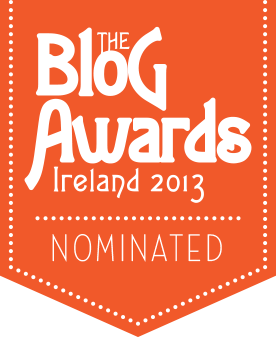QUESTION ONE
OLYMPICS I was very well aware of this plaque from many years of passing the building but it was only in July that I stopped to photograph. My instant thought was that it was another for the sports collection – Dr. Pat O’Callaghan, Denis Horgan, Dan O’Leary and Steve Casey all justifying a daily blog comment earlier in the summer following on from the likes of John C Lordan and Jack Doyle. There has been a delay while I have read (most of) a book on T. C. Murray as the web provided contradictory information with regard to an Olympic Medal – which was for literature and not for sport. Please expect some more plaques to sports people for times past in the near future. I have added to my mental To Do list further research as to the 1924 Olympics – was the “‘literary competition ‘for men of letters’ associated with the 1924 Olympic Games” the same as the “Art competitions at the 1924 Olympics in Paris” or were they different competitions; and who were the prize-winners. I suspect that this item may remain on the list for a good while. | T. C. MURRAY “Years after its initial success, Birthright earned European recognition for Murray. In 1924 it was awarded the bronze medal and a diploma in the literary competition ‘for men of letters’ associated with the 1924 Olympic Games (VIII Olympiade) in Paris (Ms. 23,510, TCM, NLI.)The play was eligible because of its references to hurling. A news report from Dublin’s Weekly Freeman, ‘Olympic Honour for Irish Dramatist’, published on 9 August 1924, explained that the literary adjudicators included ‘such distinguished names as M. Jean Richepin, Gabrielle d’Annunzio, Paul Claudel, Marcel Provost, Blasco Ibanez, and Maurice Maeterlink’ (Ms. 23,510, TCM, NLI). Another article, ‘Irish Playright’s Honour’, published by the Dublin Evening Mail on 4 August 1924, drew attention to the international significance of the award: ‘In the modern drama of Europe, Synge, Yeats, and Lady Gregory have won universal recognition. Mr. Murray has further emphasized and enhanced the literary attainments of the nation’ (Ms. 23,510, TCM, NLI). “ “It has been stated both by A DeGiacomo and by R Allen Cave that in the Art competitions at the 1924 Olympics in Paris France Murray was awarded a bronze medal for his play Birthright However according to the official record for the games although Murray was a participant in the literature category with this play and also with Maurice Harte he did not win a medal” “The bronze medals went to French Charles Anthoine Gonnet for Face to Face with Olympia's God and Irish Oliver St. John Gogarty for Ode to the Tailteann Games. Gonnet also played rugby for the French national team from 1921-27. In 1924, he was a substitute for the French national team at the Paris Olympics, but did not play in any match. He was also an athlete, swimmer and boxer. Besides his writing Gogarty was a physician, sportsman, pilot and politician, and from 1922-36 served as a senator in the Irish Parliament.” “In Cork city he co-founded the Cork Little Theatre Company with other authors such as the famed Daniel Corkery and Con O’Leary and the heroic Lord Mayor of Cork, Terence McSweeney, who died on hunger strike at Brixton Prison, England in 1920. The group became known as The Cork Realists. |
QUESTION TWO
RATHDUFF, GRENAGH AND MUTUAL LOVE
| When reading about the life of T. C. Murray, I was reminded of this plaque that I had seen earlier this year in Grenagh. The first question to myself was answered by Rathduff N.S. in that it is the National School for the parish of Grenagh. From reading the plaque in Grenagh, there was no doubt in my mind that Grenagh was proud of its association and happy with its memory of T. C. Murray. From reading Albert DeGiacomo’s book, it does not appear to have been a shared happiness. Nelson Mandela probably had very few happy days on Robben Island yet Robben Island continues to be a tourist attraction on the strength of the Mandela connection – why should Grenagh not adopt a similar position. “GRENAGH GREANACH | “Certified by the National Board of Education, Murray became a national teacher at the age of twenty. Upon his return to County Cork, he served as national teacher, first at Carrignavar in the country and later at Saint Francis National School in a poverty-stricken district of Cork City, where he came to know fellow teacher Daniel Corkery. As his health was endangered by the overcrowding and other conditions in this school, Murray accepted advice to move on to Caarrigtwohill where he ‘breathed more freely’ (Conlin 1952,, 3). While teaching at St. Mary’s School there, Murray met his future spouse, Christina Moylan, a colleague teacher and daughter of the principal……….they married on 31 July 1903 at the Franciscan church of the Holy Trinity in Cork City. In 190o Murray was appointed principal of the national school in Rathduff, another country town, near Blarney.” “Though Rathduff locals remember Christina Murray as a lovely woman who staged operattas with the school children, Murray, they recall, was so exacting – and given to sarcasm – that some parents sent their children to schools in neighbouring towns rather than expose them to Murray’s tongue.” “Murray did not mix with the locals. Owing to the elevated status of his profession and to his own reserved nature, Murray never strolled down to the local pub to enjoy ‘the craic’ (social conversation). Rather he drove his pony and trap six miles to Blarney on Saturdays ‘if the weather was fine”. “Later, in a letter to Holloway dated only 1913, Murray extolled the stimulation of the city and lamented its loss. ‘I felt I was being cheated in being obliged to leave the capital so soon, and the breath of excitement was so grateful after the ‘mists that do be on the bog’ down here.1 (Ms. 13,267, NLI)” |






